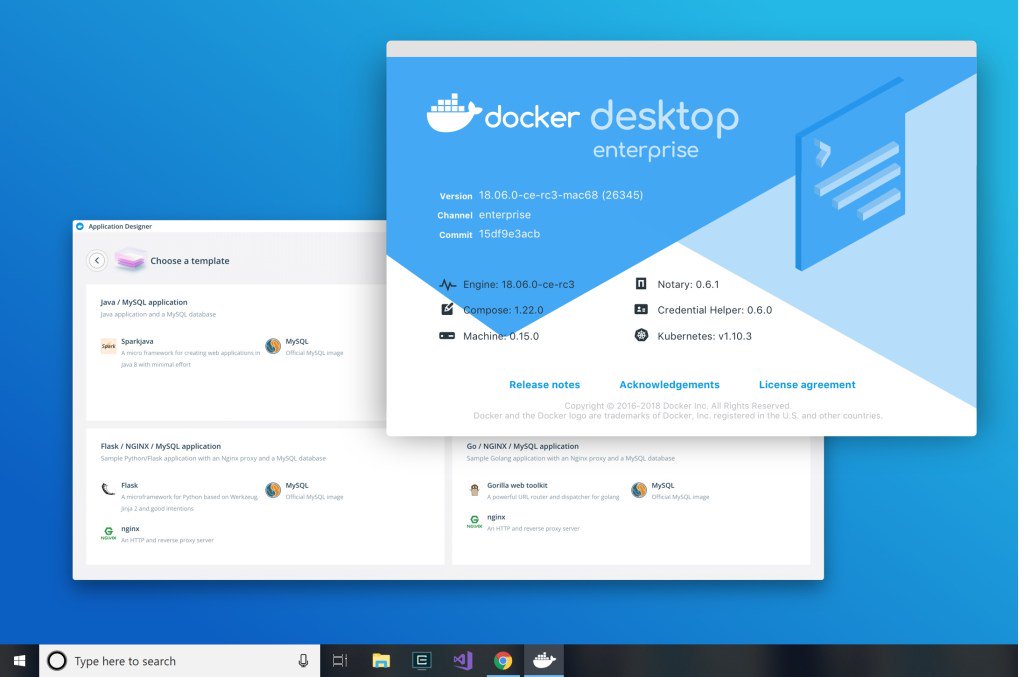
- LEARNING DOCKER FOR WINDOWS ON MAC SOFTWARE
- LEARNING DOCKER FOR WINDOWS ON MAC CODE
- LEARNING DOCKER FOR WINDOWS ON MAC FREE
As noted previously, you can do rapid deployment using Docker. Next in the getting started with docker tutorial we focus on the advantages of Docker. Next up in this getting started with docker tutorial is the advantages of Docker. You can use Docker in multiple stages of your DevOps cycle, but it is especially valuable in the deployment stage. In addition to that, when you’re building and testing the code, having a container running the solution at those stages is also beneficial because you can validate your work in the same environment used for production.

LEARNING DOCKER FOR WINDOWS ON MAC CODE
In a DevOps life cycle, the area where Docker really shines is deployment, because when you deploy your solution, you want to be able to guarantee that the code that has been tested will actually work in the production environment. The container itself can be moved from environment to environment very easily. The container itself is really just a very lightweight package that has all the instructions and dependencies-such as frameworks, libraries, and bins-within it.
LEARNING DOCKER FOR WINDOWS ON MAC SOFTWARE
Docker is an OS virtualized software platform that allows IT organizations to easily create, deploy, and run applications in Docker containers, which have all the dependencies within them.

When going through this getting started with docker tutorial, we need to first understand about Docker. Now that you know the differences between virtual machines and Docker, let begin this getting started with docker tutorial by understanding what Docker actually is.

The boot-up time for a virtual machine is about a few minutes, in contrast to the milliseconds it takes for a Docker environment to boot up.Docker is designed to be able to run across multiple environments and to be deployed easily across systems. Virtual machines have portability issues the software can work on one machine, but if you move that virtual machine to another machine, suddenly some of the software won’t work, because some dependencies will not be inherited correctly.Docker, on the other hand, is designed to run multiple containers in the same environment-it actually gets better with more containers run in that hosted single Docker engine. Another challenge of virtual machines is that running multiples of them in a single environment can lead to instability and performance issues.
LEARNING DOCKER FOR WINDOWS ON MAC FREE
With Docker, if you have free memory, you can reallocate and reuse it across other containers used within the Docker environment. If you set up an environment that has 9 gigabytes of memory, and 6 of those gigabytes are free, you cannot do anything with that unused memory. One of the other challenges of using a virtual machine is that if you have unused memory within the environment, you cannot reallocate it.The boot-up time for a virtual machine is fairly slow in comparison to the boot-up time for a Docker environment, in which boot-up is almost instantaneous.You can actually build solutions in a Docker container, and the solution is guaranteed to work as you have built it no matter where it’s hosted. In contrast, Docker was designed for portability. They’re still dependent on the host operating system, and a lot of problems can happen when you use virtual machines for portability. In terms of portability, virtual machines just are not ideal.With Docker, the performance is always high because of the single Docker engine. In terms of performance, when you start building out a virtual machine, particularly when you have more than one virtual machine on a server, the performance becomes poorer.With a virtual machine, the memory usage is very high, whereas, in a Docker environment, memory usage is very low.



 0 kommentar(er)
0 kommentar(er)
